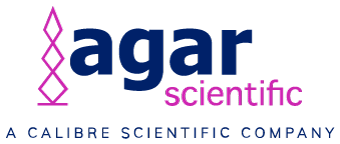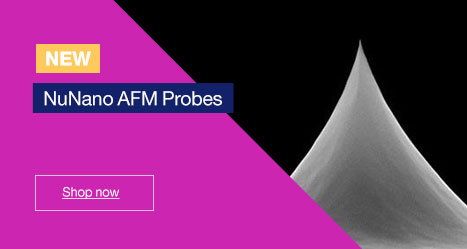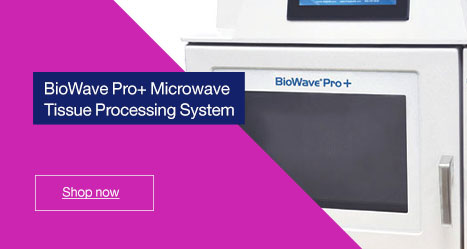Etched onto the barrel of each objective on a microscope, you will find a variety of information. In addition to the magnification and the optical correction (see my article published entitled ‘Looking Down and Looking Through: The Optics of a Microscope 2: The Objectives’ for more information on aberrations and corrections), you will find a number without units. This is the Numerical Aperture (or ‘NA’) of the objective.
The NA of an objective is an important aspect as it relates to the final image formation seen when looking down through the eyepieces (which will be covered in full in a forthcoming blog article). Briefly, resolution relates to the amount of detail which can be seen in the final formation of an image. An objective with a high magnification would be unable to resolve detail in your sample without a similarly high NA.
The NA of an objective is the simply the ability of the lenses to collect light at a fixed distance from the sample which you are viewing. When light passes through and leaves a specimen, it enters the front lens of an objective as an inverted cone. However, a percentage of this image-forming light is refracted and reflected. Objectives which have a high NA allow for increasingly oblique light waves to be collected by the front lens which will in turn form a final image which is not only relatively brighter, but contains more information and detail and is highly resolved.
The angular aperture
The light from the microscope source passes through the specimen/slide and continues through the air (or an immersion medium) as a cone of light between the cover glass and the objective front lens. The ‘angular aperture’ refers to the maximum angle of the edges of this image-forming cone of light which can be collected by the objective front lens when the specimen is in focus. In addition to an increasing NA, image brightness and image detail (resolution) are also related to the angular aperture.
There is an inverse relationship between the angular aperture and the working distance of an objective. I have covered working distance in my article entitled ‘Looking Down and Through: Microscope Optics 3: Oil Immersion Objectives’, but to briefly recap, the working distance is the actual distance (in millimetres or microns) between the objective front lens and the surface of the cover slip when the object is in sharp focus. Objectives with short working distances will consequently have a greater ability to gather more oblique light rays from a specimen compared to longer working distance objectives. Angular aperture is usually determined by the optics within the objective and each objective lens will have an optimal focal length and working distance- it can’t simply be increased by moving the objective closer to the slide!
Metaphorically, think of it this way: if you are standing in front of a door with a key hole which leads into another room, then when you are at a distance, you will only be able to see a little of the light and objects within the room. If you press your eye against the key hole, you will then see more of the detail and light in the room as you have, in theory, increased the angular aperture of your eye.
Calculating the numerical aperture
Numerical aperture is calculated using the formula below:
Numerical Aperture (NA) = n • sin(θ)
Where ‘n’ is the refractive index of the medium between the cover glass and the objective front lens (e.g. air, water or oil).
Where ‘θ’ is half of the angle of the cone of light which is collected by the front lens lens (i.e., the angular aperture).
Numerical aperture is proportional to refractive index. For example, air has a refractive index of 1.00, water has a refractive index of 1.33, whereas many of the immersion oils have refractive indexes around 1.52.
The theoretical maximum angular aperture of light entering the front lens of an objective is 1800. This would give a θ value of 900 (half of the angle of the light cone). As a result, the theoretical maximum NA of an objective would be one (which is equal to the sine of 90). The refractive index of air is also one, therefore the maximum (theoretical) NA of an objective with an air gap between the front lens and the specimen would only equal one.
Therefore, the refractive index of air is a limiting factor in achieving the highest possible NA of an objective. As a result, objectives with NA values greater than one are the immersion objectives where the air gap is replaced by a medium such as water or oil. An angular aperture of 1800 is physically unachievable- the widest angle of light which can be collected by an objective is around 1440. Consequently, the maximum achievable NA of a non-immersion objective is approximately 0.95 (which is equal to the sine of 72).
A word or two on refraction
To help to understand NA, it is useful to also have some understanding of refraction. In microscopy and optics, refraction refers to the change in direction of light waves which results from a change in the medium though which light passes (for example, glass, air, oil or water).
Refraction is described in a formula known as ‘Snell’s Law’. Refraction was first described in the year 984 by a Persian physicist and mathematician called Ibn Sahl. In 984, he presented a manuscript in which he described how mirrors and curved lenses focused and bent light. Snell’s Law is actually named after a Dutch mathematician and astronomer called Willebrord Snellius (1580-1626). Although he was credited for mathematically describing refraction, it is more accurate to say that he ‘rediscovered’ diffraction after the work of Ibn Sahl.
Snell’s Law describes the relationship between the angles of incidence and refraction of light as it travels through the boundary of two different medium (e.g. from air to glass). The Law states that the ratio of the sines of the angles of incident and refracted light are equivalent to the reciprocal of the ratio of the refractive indices through which the light passes.
To simplify this further, as light travels through one medium to another, it changes speed (e.g. when passing from air to water, light slows down). When light passes across the boundary of two different medium at an angle other than 900, this results in a change of direction. Although the frequency of light doesn’t change, the resultant wavelength will be determined by nature of the medium.
In summary, without a correspondingly high NA, a high magnification objective will have low resolution. Most microscope companies offer objectives which have high NA values for use with immersion medium. If you are in the lucky position of buying a custom microscope, or buying new objectives for your existing instrument, you should always consider buying objectives which offer the highest NA value which you can afford.
AUTHOR: Martin Wilson


